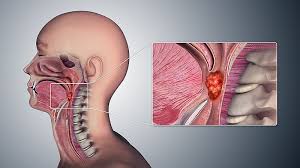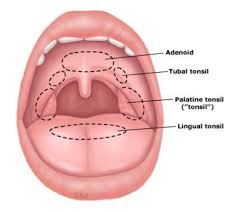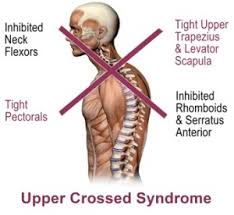

In today’s screen-centric world, poor neck posture has become a common but underestimated issue.
While its connection to neck and back pain is widely acknowledged, one lesser-known consequence is its effect on the throat.
Specifically, bad neck posture can lead to physical compression of throat tissues, interfering with essential functions like swallowing and breathing.
This article by BestForwardHeadPostureFix examines how and why poor neck posture leads to throat compression, focusing solely on the anatomical and physiological impacts without diverging into solutions or general postural education.
Points Covered in this Article:
- The Anatomy of the Neck and Throat
- Mechanical Impact of Poor Neck Alignment
- Throat Tissue Compression and Muscular Tension
- Cervical Spine Misalignment and Pharyngeal Space
- Swallowing Difficulties Due to Throat Compression
- Breathing Restrictions from Postural Compression
The Anatomy of the Neck and Throat
The human neck is a delicate and intricately designed structure made up of seven cervical vertebrae (C1 to C7), which support the skull and protect the upper portion of the spinal cord.
Around these vertebrae lies a dense network of muscles, ligaments, arteries, veins, lymph nodes, and nerves. These components work together to provide movement, structural support, and serve as passageways for vital functions.
Nestled within this narrow space are the pharynx and larynx—two essential structures in the throat. The pharynx is responsible for directing both air to the trachea and food to the esophagus, while the larynx facilitates speech and protects the airway during swallowing.
Because the neck is such a compact and multi-functional region, its structures depend heavily on proper anatomical alignment.
When the neck maintains its natural curve, the throat tissues have enough room to function without pressure. However, poor neck posture—such as tilting the head forward for long periods while looking at a phone or laptop—can disrupt this alignment.
As the cervical vertebrae shift out of position and muscles like the sternocleidomastoid and scalene tighten, they press against the throat, reducing space in the pharyngeal area and compressing soft tissues.
This compression can interfere with swallowing, speech, and breathing.
Studies like the one published in Dysphagia Journal and research found on the National Institutes of Health platform confirm that altered neck positioning has measurable effects on pharyngeal function and can contribute to swallowing difficulties.
Mechanical Impact of Poor Neck Alignment
When the neck extends forward or downward—often due to prolonged use of phones, laptops, or slouched sitting—the cervical spine loses its natural curvature and neutral alignment.
In this altered position, the head, which typically weighs 10 to 12 pounds, shifts forward relative to the spine, dramatically increasing the mechanical load on the neck.
For every inch the head moves forward, its effective weight on the neck muscles nearly doubles. This added burden forces the surrounding muscles and soft tissues to work overtime just to support and stabilize the head.
Over time, this continuous strain leads to physiological changes in the muscles, particularly the sternocleidomastoid and scalene groups.
These muscles can become chronically shortened, thickened, and hypertonic—meaning they remain in a state of heightened tension. As they enlarge and tighten, they begin to encroach on the anterior neck space.
This muscular intrusion can physically press against the throat, narrowing the pharyngeal passage through which air and food must travel.
The result is a restricted airway and esophageal pathway, which may contribute to difficulty breathing, swallowing, or speaking comfortably.
Throat Tissue Compression and Muscular Tension
- Key Muscles Involved:
- The infrahyoid muscles, platysma, and suprahyoid muscles are located at the front of the neck.
- These muscles support essential functions like speaking, swallowing, and breathing.
- Relationship to Throat Tissues:
- These muscles surround and influence the pharynx, larynx, trachea, and upper esophagus—the soft tissues of the throat.
- Proper muscle tone and neck alignment help maintain space for these structures to function properly.
- Effect of Bad Neck Posture:
- When the head is held forward or downward for long periods, the anterior neck muscles become:
- Overactive (hypertonic)
- Shortened and stiff
- This results in continuous inward pressure on the throat tissues.
- When the head is held forward or downward for long periods, the anterior neck muscles become:
- Throat Compression:
- Over time, this tension leads to physical narrowing of the:
- Airway (trachea, pharynx)
- Esophageal passage
- This limits the movement of air and food.
- Over time, this tension leads to physical narrowing of the:
- Suprahyoid Area Constriction:
- The suprahyoid region, responsible for tongue base elevation and swallowing, becomes compressed.
- Reduced space here restricts tongue mobility and throat clearance.
- Symptoms That May Develop:
- Difficulty swallowing (dysphagia)
- Voice fatigue or strain
- Sensation of tightness or a lump in the throat
- Discomfort while speaking or eating
Cervical Spine Misalignment and Pharyngeal Space
Postural misalignment of the neck significantly disrupts the natural curvature of the cervical spine.
Under ideal conditions, the cervical spine maintains a gentle inward curve known as the lordotic curve, which allows for even distribution of the head’s weight and balanced support.
However, poor posture—especially with the head positioned forward—can flatten this curve or push the cervical vertebrae out of alignment toward the front.
This shift reduces the anteroposterior diameter of the neck, meaning there is less space between the back and front of the throat.
As this space narrows, the posterior pharyngeal wall moves closer to structures at the front of the throat, such as the tongue base, epiglottis, and larynx.
This crowding limits the mobility and flexibility of these tissues, which are essential for tasks like breathing and swallowing. The larynx and epiglottis, in particular, may become restricted in their range of motion, increasing the risk of improper airway closure during swallowing.
Scientific studies using imaging techniques such as videofluoroscopic swallow studies (VFSS) have shown that forward head posture reduces both pharyngeal area and airway volume.
Research published in journals like Dysphagia and archived by the National Institutes of Health confirms that this can raise the risk of tissue obstruction and aspiration during swallowing.
Swallowing Difficulties Due to Throat Compression
When throat tissues are compressed due to poor neck posture, the finely tuned sequence of muscular events required for safe and efficient swallowing becomes disrupted.
One of the most critical actions during swallowing is the elevation of the larynx, which helps protect the airway and assists in opening the upper esophageal sphincter.
A misaligned cervical spine can interfere with this upward movement, reducing the sphincter’s ability to open fully and allowing food or liquid to linger in the throat.
In addition, compression of pharyngeal tissues can impair the sensory feedback needed to initiate a proper swallow.
The nerves responsible for detecting the presence of food in the throat may be less responsive, delaying the reflex and increasing the risk of aspiration.
These disruptions often result in pharyngeal residue (food left behind after swallowing), coughing or choking during meals, and the frequent sensation of something being stuck in the throat—a condition commonly referred to as globus sensation.
Breathing Restrictions from Postural Compression
Throat compression due to poor neck posture does not just interfere with swallowing—it also significantly impacts breathing efficiency.
The trachea, which sits just in front of the esophagus, serves as the main airway leading to the lungs. When the head is habitually held in a forward or downward position, anterior neck muscles such as the sternocleidomastoid, scalene, and infrahyoid groups can become tight and overactive.
These muscles, along with forward-shifted cervical vertebrae, exert inward pressure on the upper airway, especially in the region of the pharynx and larynx.
This structural narrowing reduces the diameter of the upper airway and impedes airflow, often resulting in labored or shallow breathing and damages your vocal cords. Individuals may find themselves breathing through the mouth more frequently, especially during physical exertion or even light activity.
In more severe cases, this can worsen sleep-disordered breathing such as snoring or obstructive sleep apnea (OSA), particularly when lying down, as gravity intensifies soft tissue collapse.
Even during daytime hours, reduced oxygen intake may lead to chronic fatigue, poor concentration, and shortness of breath—symptoms that are often overlooked but directly tied to postural airway compression.
Conclusion
Poor neck posture is not just a pain in the neck—it is a full-blown ambush on your throat, too.
While most people associate slouching with sore shoulders or an achy spine, your throat quietly suffers in the background.
When your head starts creeping forward like it is trying to escape your body, it pulls your cervical spine out of alignment and tightens surrounding muscles.
This combo squeeze play ends up compressing your throat tissues, leaving less room for essentials like swallowing and breathing to happen smoothly.
Suddenly, eating a sandwich or taking a deep breath feels more like a workout than a reflex. And while you’re blaming it on allergies or bad sleep, your posture might be the real villain.
Recognizing how closely your neck posture and throat function are connected is like uncovering a hidden plot twist in a mystery novel—only this one comes with fewer gasps and more yawns, because yes, poor posture can make you tired, too.
References:

